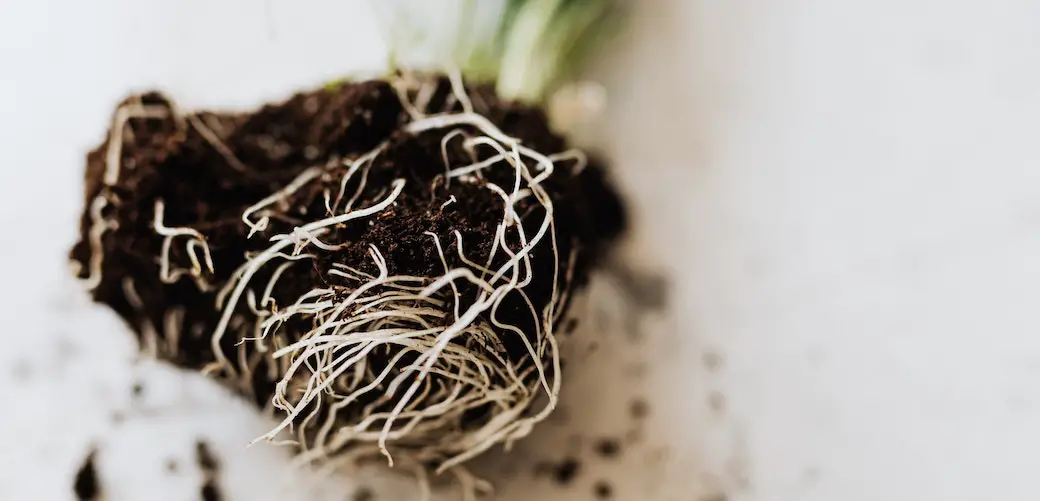Plants can do some amazing things and they are capable of some quite phenomenal feats of healing and regrowth.
Plants however, have very sensitive roots that sometimes get torn at the slightest pull, so what happens if you accidentally rip the roots of your plant or you outright just cut them with scissors? Can a plant regrow its roots?
The answer is that plants with damaged roots will usually regrow their roots, as long as the plant has enough energy reserves to be able to do so. It will depend on how much of the root has been lost and how strong the plant was to start with, but most plants can regrow root damage in normal circumstances.
If you’ve accidentally ripped some of the roots off your favorite plant, don’t panic – because most plants will survive this, although not all will, and it is certainly a setback for any plant. You will need to take good care of your plant in order for it to survive, especially if it has lost a lot of roots.
A plant that has lost its roots will struggle to take in food and water from the ground.
It will also struggle to stay upright in the soil, as roots serve several functions for the plant, and a major one is anchoring it in place.
Without roots, a plant is vulnerable to being blown over or pulled up by predators or even by accident. Plants depend on having a wide, spread out network of roots in order to keep their place in the ground and not get washed away by rain or wind. If they don’t have roots, they can’t stay in place.
A plant without roots will also struggle to take in nutrients. If it has some roots left, it may manage with these if the ground is good and it has plenty of water, and it will manage to regrow its roots over a period of time.
Remember that you are quite likely to damage at least some of the roots when you move a plant from one pot to another. This will shock the plant a bit, so it’s important to settle it into new soil and treat it carefully for a while.
Don’t keep transplanting plants; they need time to settle into an environment and re-root properly before they can be moved again.
If you’re looking for a how-to guide on repotting or changing soil in indoor plants, check out another one of my articles, where I include best practices and what to look for while doing that.
Can A Plant Survive Without Roots?
Some plants grow without roots, such as algae and seaweeds. These don’t need roots to survive, partly because the water gives them support.
However, most plants do require roots to survive, as these are their only means of taking in oxygen, water, and nutrients. No plant that is meant to have roots will survive for long if they lose all their roots.
If they have a lot of energy stores, it is possible that some will re-root in the right conditions. Cuttings, for example, can spread roots from a stem that had none, and will eventually grow a full network with which to anchor and feed themselves.
However, this isn’t the case for all plants, and you should be careful. Many will struggle to re-root if they have lost the majority of their root network, and if the plant already had low energy reserves, your chances of it rooting again are very low indeed.
When re-potting or moving plants, always handle the roots carefully. If a plant seems stuck in the soil, you need to gently tease and wriggle the roots until they come loose, not simply yank them out. It is important to be careful and make sure you do minimal damage to the roots.
If you have a root-bound plant and you need to slightly trim its roots, read more about how to do it carefully in this article, where I include a simple guide with images.
How Do You Repair Damaged Plant Roots?
Fortunately, if you have damaged the roots, or they have been damaged by unfavorable conditions, there are things that you can do to help repair them.
Firstly, you will need to trim off any damaged or mushy roots using a pair of sharp scissors.
Do not worry if you need to trim quite a bit; there is no point in leaving roots that won’t help the plant and this could actually make things worse, as these will be taking up valuable underground space and stopping the plant from establishing new roots.
You should replant your plant in some soft soil and water it gently.
Too much watering will result in suffocated roots and possibly washing the plant away – as it has no network established.
Too little watering will further stress the plant, as it won’t be able to get enough to drink.
Try to let the soil dry out a little between waterings, and aim for small drinks on a regular basis. This will help the plant get the water it needs without drowning it.
Using soft soil makes it easy for new roots to sprout and spread, re-establishing a good network beneath the ground. Long, wide roots tend to be anchoring roots, and thin, winding roots are called feeder roots. Both are important to the survival of a plant.
You can also try powders and liquids designed to stimulate root growth.
For example, the TakeRoot Hormone should help cuttings to take root. You simply dip the end of the cutting into the powder and shake off the excess, and then plant into fresh soil.
Alternatively, try Bonide Liquid, which is formulated to help roots regrow in transplanted plants. You mix it with water, following the directions, and then pour it directly into the soil, where it should stimulate root regrowth.
Help! I Accidentally Ripped The Roots Of My Plant!
 Don’t panic – your plant may survive!
Don’t panic – your plant may survive!
If you accidentally ripped the roots of your plant, here are the easy steps you need to follow:
- Gently replant your plant in fresh compost.
- Use fresh, soft compost so the plant’s root can grow without much spent energy.
- Just sprinkle the soil lightly, don’t water heavily.
- Move the plant in the shade, no direct sun.
You need to replant your plant in fresh compost (not the same soil with the torn roots) and give it a little water. You don’t want to use the old compost as the torn roots will decay and may invite disease.
Use loose, soft compost that is fresh and hasn’t been used for other plants – again, to increase the sterility of the environment. Gently settle your plant’s remaining roots, or just your plant if the roots have all gone, into the compost.
Apply a light sprinkle of water, just enough to dampen the soil, and stand the plant somewhere shady. As it cannot absorb much moisture, it won’t have much sun resistance at first, so you don’t want it in direct sunlight.
You can apply a rooting hormone if you want to, but don’t feed the plant. It needs to focus on regrowing its roots before it can take in food, so there is no point adding richness to the soil until it has begun to do that.
Most plants will use their stores of energy in order to regrow roots, so adding to the soil won’t do much. You will not know straight away if the plant is starting to regrow roots, except that it will not wilt and die away, though it may look very sick for quite some time. Patience will be key here.
Don’t be tempted to poke around and see if the plant is re-rooting; you might cause more damage. Wait, water gently and frequently, and see what happens. With luck, your plant will re-root and come back, although it could take a while, depending on the extent of the damage.
Final Thoughts
Plants are amazing organisms, and root damage doesn’t spell automatic death for them. With care and patience, you can bring your plant back to life, help it re-establish its root network, and nurse it to full health again.


